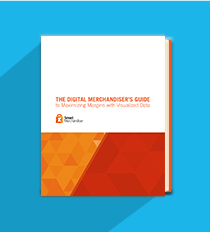
More than 40% of internet users have purchased goods and/or services online - this amounts to more than one billion ecommerce customers, a number that is projected to grow exponentially. With such a promising market in eCommerce, businesses are implementing a wide range of digital merchandising strategies to stay ahead of their competitors in attracting buyers.
However, a significant number of businesses are focusing so much on advanced strategies that they're losing sight of the basics. Although leveraging elements like advanced analytics is a key component to finding success in the digital merchandising space, it’s also critically important to set a strong foundation with the basics - which includes writing excellent product descriptions.
Product descriptions form a bridge between your brand and the buyer. They tell a story and if written well, will evoke emotions in the readers. Unlike in traditional brick and mortar stores where leads are mostly converted into customers after physically assessing the products, your online lead conversion process largely depends on your brand's ability to tell a convincing story and describe (through words and visuals) your products in a very specific way.
Here are three secrets you can use to help sharpen your product descriptions:
1. Get In-depth with Buyer Personas
A simple search through the internet reveals that most eCommerce businesses use standard product descriptions that are brief and tend to overuse keywords in a bid to land more eyes from search engine traffic. But by sticking to the bare minimum here, these brands lose the opportunity to convert at a higher rate by really speaking to their audience as people.
Taking the time to write product descriptions with your core buyer persona(s) in mind is the first essential step to developing product descriptions that will drive results. Who are you trying to appeal to? Questions like these can help you understand your core audience in a more in-depth way:
- Where did they grow up?
- What job do they have?
- Do they have children?
- What's their favorite thing to do after work?
- What's the thing they're most worried about in life?
- etc.
The primary secret to this is understanding the likes, desires, fears and preferences of your audience. Take the Star Trek Remote Control product description for instance. Firebox demonstrates a comprehensive understanding of its target market by using humor and detail to prepare an engaging, compelling and effective product description.
2. Evoke Emotions
After writing out a product description, review it to find at least one area where you can inject some emotion. A sentence or reference to something that doesn't necessarily describe the product physically or technically. But rather, an observation about how the product might make the buyer feel when they use it / wear it / eat it / show it to friends, etc.
For most people, they're making choices on which products to buy online based on an emotional decision. Think about it, how often are you buying things you actually need online? Most of the time we're making impulse or desire-based purchases that relate to things we want.
By taking the time to help your web visitors imagine how they might feel once they buy your product, you're one step closer to eCommerce merchandising success: increasing conversion rates.
3. Embed Social Features
Since 71% of social media users are likely to purchase from eCommerce brands that they engage with through social media, you should embed social features in your product descriptions. Enable sharing options to allow leads to further attract more prospects to your site through social media platforms like Pinterest, Facebook and Tumblr.
Additionally, you should allow visitors the ability to like and comment through their social media accounts, as well as the opportunity to write product reviews - a key determinant for online shoppers.
Finally, all product descriptions and page functionality should be optimized for search engines. This doesn’t mean stuffing keywords or using unnatural language, but rather, ensuring that you're taking advantage of the SEO value in things such as product image alt tags and meta descriptions for each product page's URL.
Improving profit margins is at the top of all eCommerce merchandiser’s to-do lists which is why we’ve created The Digital Merchandiser’s Guide to Maximizing Margins with Visualized Data eBook.
Download the eBook to learn more!


